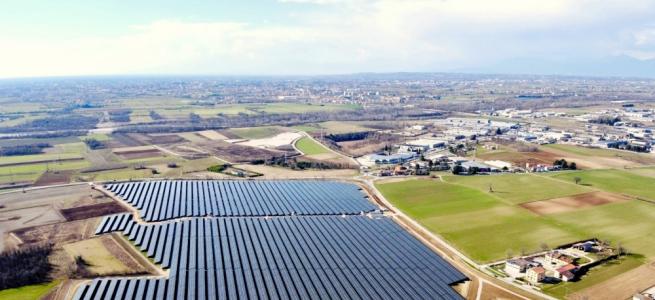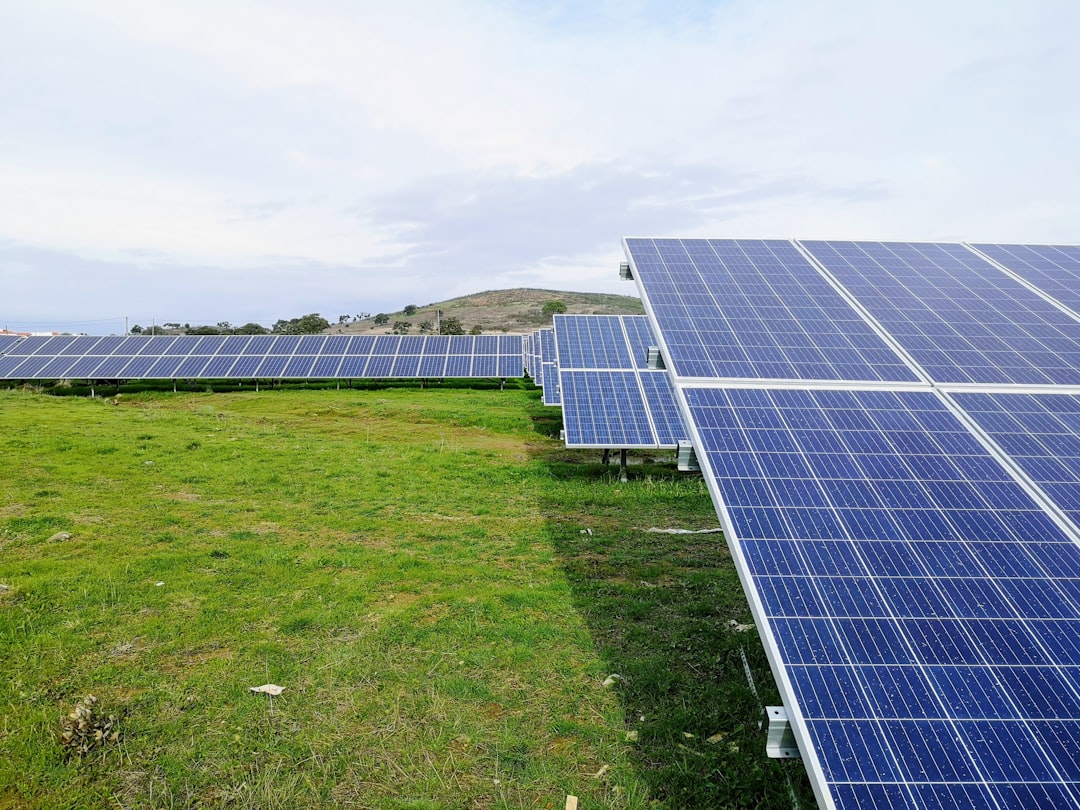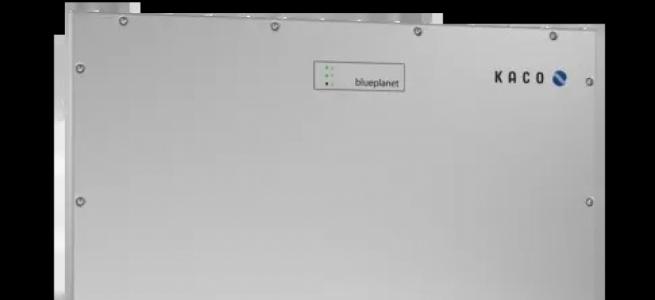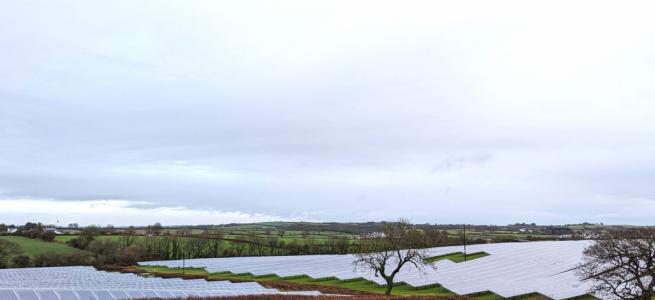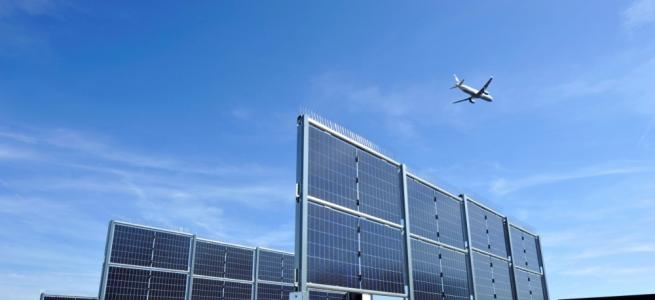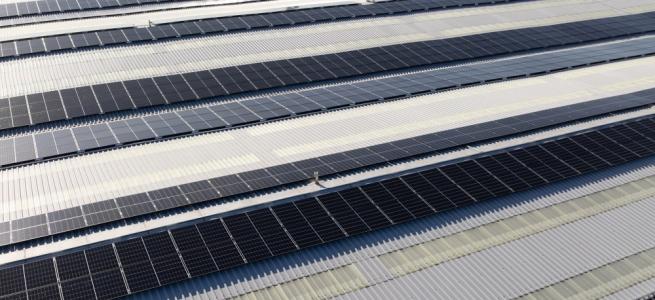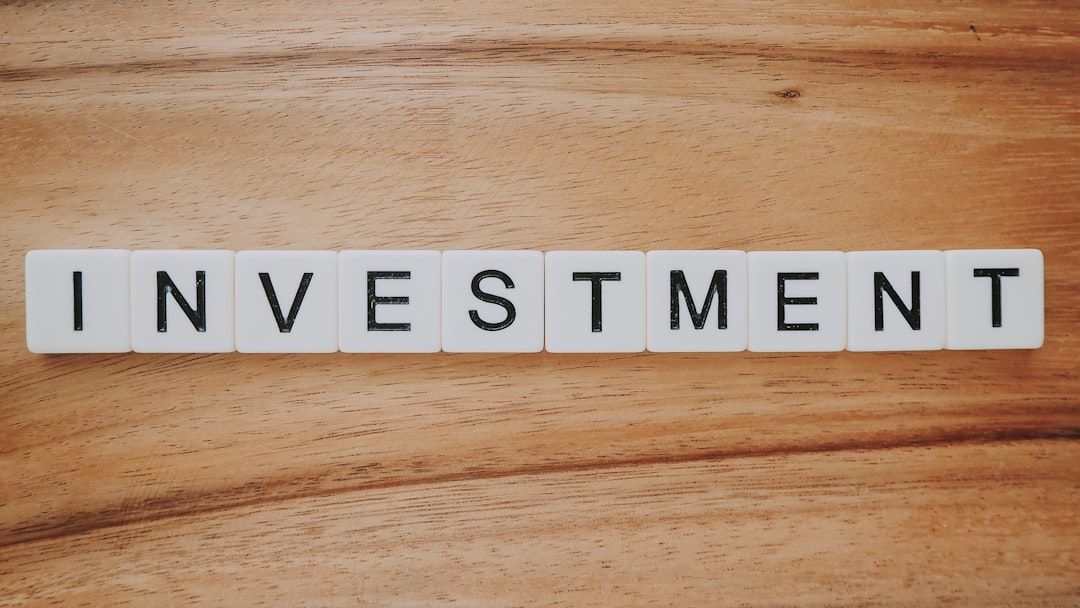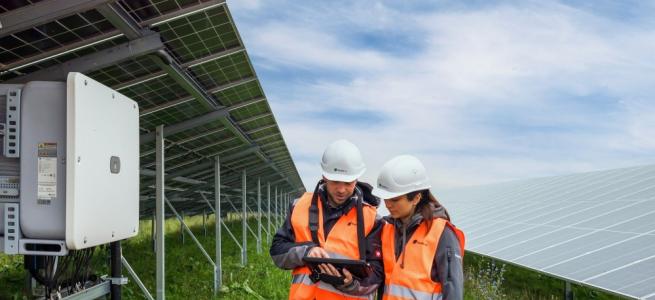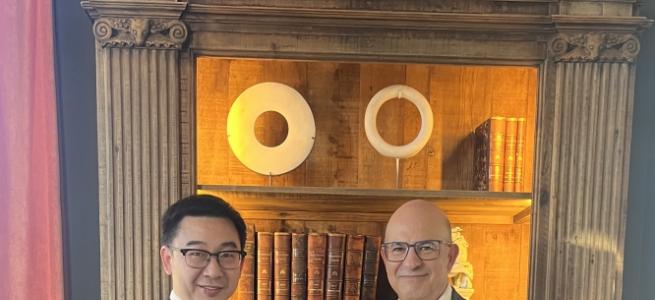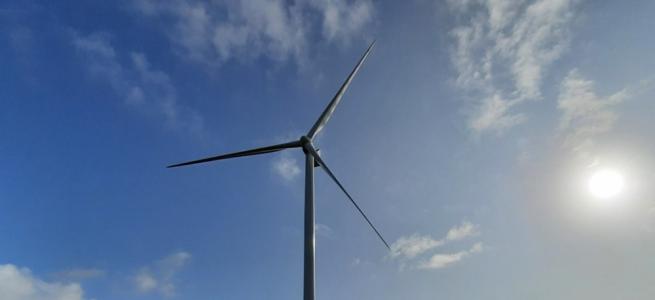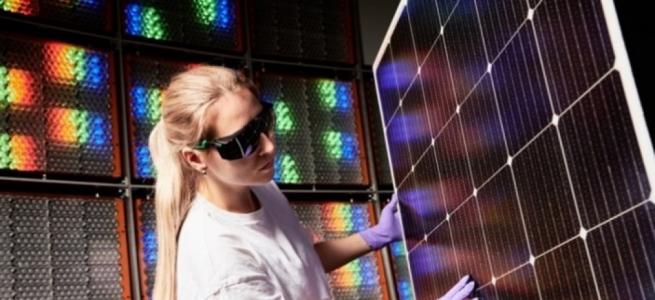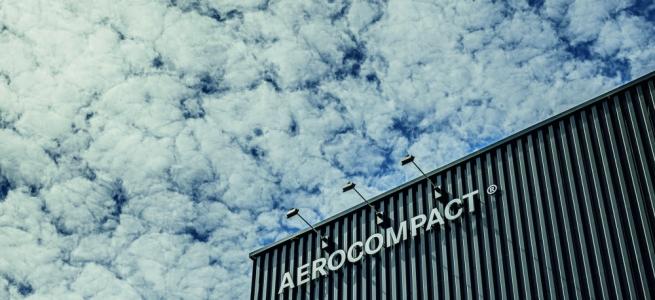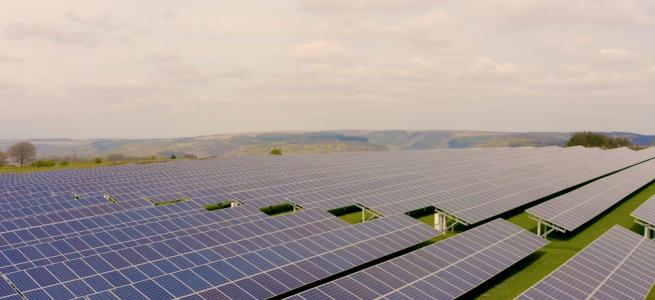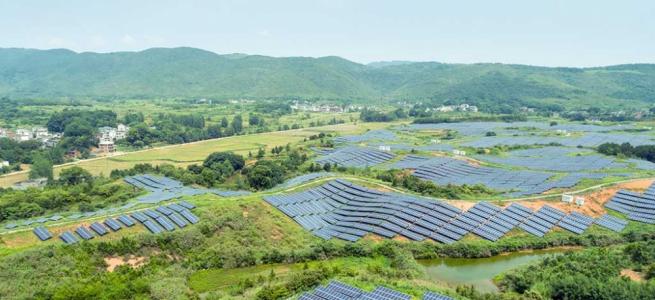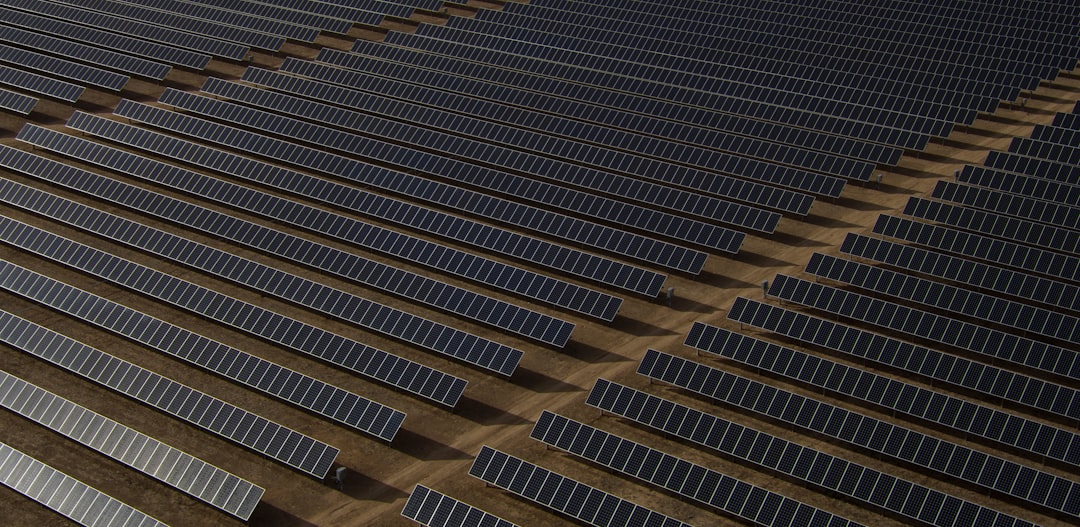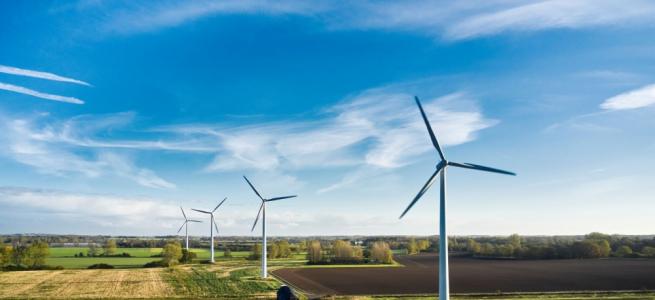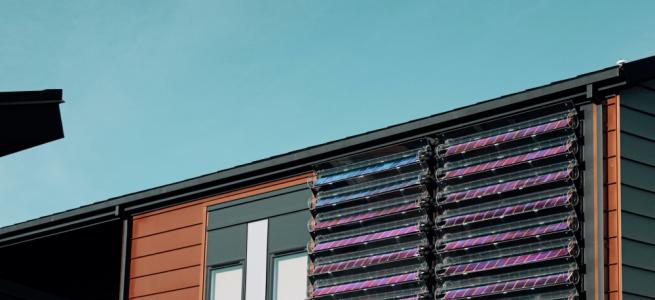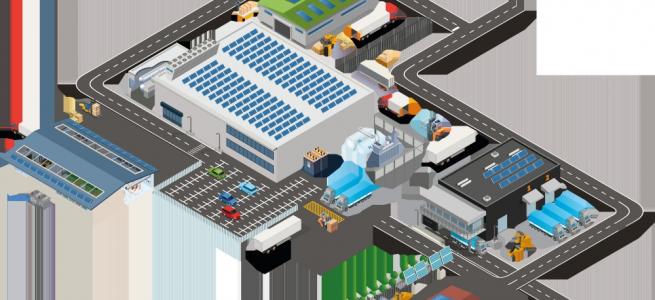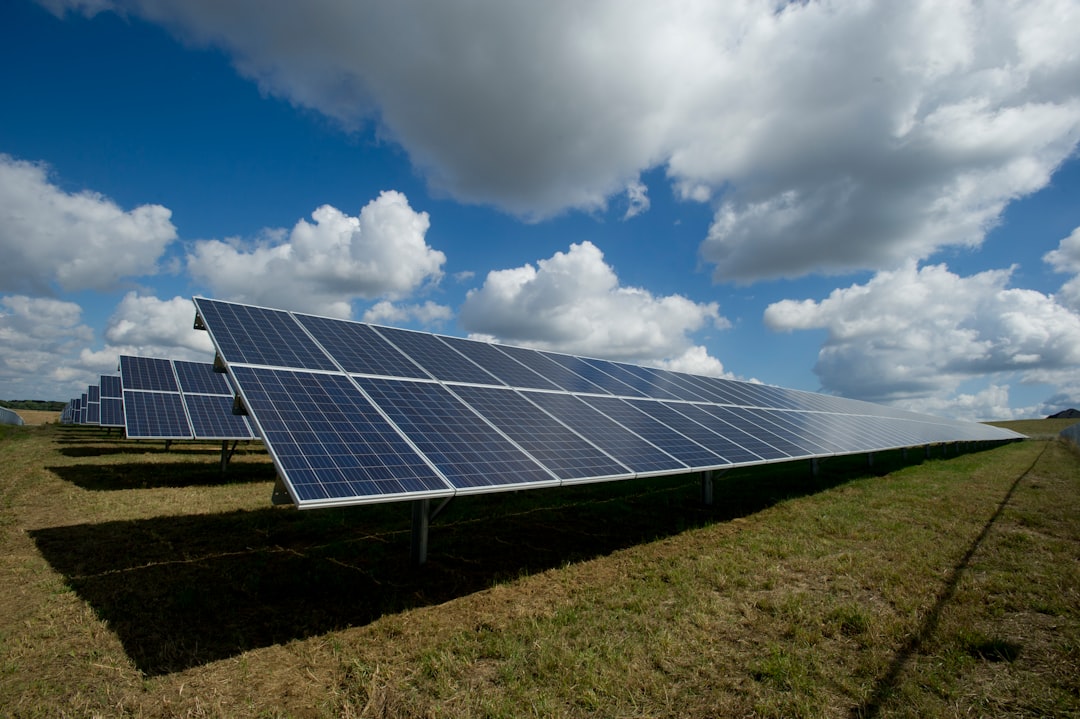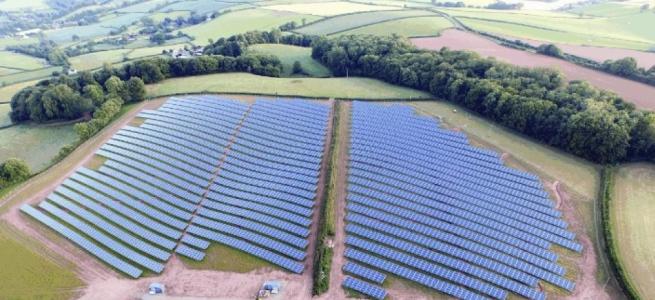PERC Efficiency Gets a Boost from LDSE
Recombination losses in the emitter of silicon photovoltaic (PV) cells are becoming more of a concern in passivated emitter rear cell (PERC) designs. Boosting efficiency requires optimizing emitter architectures; of the various techniques that are possible in high volume manufacturing (HVM), laser doping of selective emitters is the most attractive and affordable candidate. While such techniques require adding a laser process tool, this is the only addition to a typical solar cell production line, yet doing so eliminates the costly consumables employed by other methods that add sizeable long-term production costs. A green nanosecond laser source, rectangular beam shaping, and high precision alignment of the laser pattern are prevalent components needed to reduce recombination losses. An efficiency increase of up to 0.3 percent along with a more relaxed selection of metal pastes and firing parameters are the main benefits of laser-doped selective emitter (LDSE) technology described in this article.
Overcoming Loss
The emitter architecture design of a typical crystalline silicon (c-Si) solar cell has a major constraint: recombination losses. Reducing the P concentration in the emitter is an important goal to reduce recombination losses at the surface caused by inactive P and to improve the blue response of the solar cell. On the other hand, the lower doping level of a shallow emitter increases the contact resistance and the recombination loss below the metal contact. Specifically designed metal pastes that are able to contact the shallow emitters without short circuiting them are required. This conundrum led to the introduction of selective emitters (SE) around the year 2010. The SE is an architecture that utilizes low emitter doping over the entire front area of the wafer and heavily doped areas locally underneath the metal finger grid. The blue response of the SE solar cell is significantly enhanced and a corresponding efficiency increase of around 0.3 percent is typically observed. Shortly after its market introduction, the benefits of SE technology were superseded by continuously optimizing printing technology. But recently interest in SE technology has resurfaced when passivated emitter rear cells (PERC) began taking over a major portion of c-Si solar cell manufacturing. The seventh edition of the ITRPV roadmap predicts an increasing share of SE solar cells in the coming 10 years. This article describes the fabrication method of LDSE for PERC solar cells and discusses reasons for its revival.
The laser-doped selective emitter
The schematic of a SE solar cell is shown in Figure 1. While the highly doped areas underneath the metal fingers enable a low contact resistance the lower doped areas between the metal fingers show a wider window for light conversion and a higher passivation efficiency, hence a higher efficiency of the solar cell.
Figure 1: Schematic figure of a selective emitter solar cell
Various methods for the production of SE solar cells have been proposed and introduced to the market. The most common process schemes are masked etch back of a deeply diffused emitter by wet chemistry, printing of special dopant inks, or laser diffusion out of the Phosphor Silicate Glass (PSG) layer, which is called laser-doped selective emitter (LDSE). While the first two methods deliver benefits, they suffer from high consumption chemistry costs compared to investing in additional production equipment; LDSE can be accomplished with one single laser machine, which does not consume any chemicals. This makes laser doping the most attractive fabrication method for selective emitters when one considers the alternative of high consumable costs and longer production cycles involving wet chemistry (raw costs, transport, delivery, cleanup, etc.) The principle of the LDSE is to use excess P from the PSG layer that is deposited during the POCl3 diffusion process. The energy of the laser beam locally activates the P atoms to diffuse further down into the emitter and to locally enhance the doping level of the emitter, as illustrated in Figure 2.
Figure 2: Schematic sketch of the LDSE process
The process flow of a conventional c-Si solar cell with and without LDSE is depicted in Figure 3. As can be seen only one single process step needs to be added to the standard flow to make a LDSE solar cell.
![]()
Figure 3: Process flow for a conventional and selective emitter design solar cell using laser doping (source: Fraunhofer ISE)
For a successful integration of the additional laser doping step some other process steps need to be adapted and fine-tuned, mainly the POCl3 process. This process must be tuned to provide a sufficient P concentration of >1020/cm2 at the surface and an increased sheet resistance of >120 W/sq compared with typically <100 W/sq for standard emitters. The PSG etch after the LDSE process can optionally be enhanced with a slight Si etchback to remove remaining excess P. A high precision alignment unit in the printing tool is required in order to align the front metal grid with the LDSE pattern. The selection of the Ag paste and the contact firing parameters are facilitated due to a wider process window enabled by the SE architecture.
Processes and tool solutions for LDSE
For the LDSE process the laser machine has to master two major additional challenges. First, since the LDSE pattern must be aligned with the front side finger pattern made by screen printing, the accuracy of the pattern as well as its placement on the wafer must be precise in order to avoid efficiency and yield losses due to misalignment. A line-to-line accuracy of 10 µm should be achieved over the entire array of lines, i.e. not only between two adjacent lines, but also between the first and the last line. In addition, the pattern placement accuracy should be less than 20 µm to reference edges or the center of gravity of the wafer in case the printing tool aligns with the same strategy. A smarter approach is using fiducial marks, which can be placed and detected with an accuracy of 10 µm. This strategy lowers the requirement for the pattern placement accuracy of the laser tool, but requires extra process time for writing the fiducial marks and expertise inscribing marks with a laser diffusion process so that they can be detected by a high resolution camera after the SiN layer is deposited on the structure.
The second challenge facing LDSE is the ability to achieve an upmost homogeneous doping concentration over the entire line width of the LDSE pattern. The line width of the doped areas must be equal or greater than the width of the Ag finger plus the tolerances of the alignment features of the laser and the printing machine, respectively. Assuming a finger width of 40-50 µm and the use of today's state-of-the-art equipment and printing screens, the width of the LDSE lines should be no more than 150 µm; it should ultimately be reduced to less than 100 µm after optimization. Broadening the LDSE lines in order to allow higher tolerances for the alignment is not the right option since it comes along with reducing the low doped areas, which are responsible for better light conversion. Such small tolerances do not allow for using Gaussian shaped laser beams, since this results in alveolar edges of the laser lines and an inhomogeneous distribution of the laser energy with a peak in the center. This energy peak can cause melting of the pyramid structure of the textured Si surface and also makes the concentration profile of the dopant uneven. Rectangular beam shaping using mask imaging optics patented by InnoLas helps to achieve a uniform energy distribution, as illustrated in Figure 4. A laser source with sufficient power reserve must be chosen as well as a sufficient pulse length to activate the diffusion of the dopants. Typically a pulse length of >100 ns at a wavelength of 532 nm should be selected for the LDSE process.


